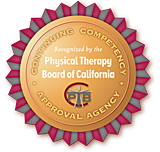
Learning The Method
MNRI® Oral-Facial Reflex Integration Level 1
Course Overview
Oral-Facial motor reflexes first appear in infancy and remain active throughout life, supporting a broad range of needs essential to:
- Human survival, including breathing, rooting, eating and general neurovascular function
- Accessing and managing visual, auditory, and other sensory system input
- Different coordination systems in different combinations – hand, mouth, ear, eye, tongue, neck, and cranial coordination systems
- Nonverbal (emotional expressions and cognitive activity) and verbal communication (articulation)
- Language development (decoding and coding, phoneme/sound programming and performance) and comprehension
Facial reflexes not only affect function in the facial area, they also affect function though out the whole brain-body system. The MNRI® Facial Reflex Integration Program techniques work to activate and engage reflex actions, movements and patterns necessary for the maturation of more complex motor reflexes and the development of advanced communication and cognition. The engagement and maturation of facial reflexes can be impeded by congenital issues or traumatic events that occur in utero, at birth, or anytime after birth. Depending on the number of facial reflexes and related primary motor reflex patterns impacted, a broad array of associated life challenges can appear. MNRI Facial Reflex program techniques have been used with great success for children experiencing various delays in communication development.
MNRI Oral-Facial Reflex Integration course explores:
- The general MNRI Method and the role played by the Facial Reflex Integration Program
- Oral-facial reflexes and how they relate to primary motor reflex patterns and important body systems
- The role oral-facial reflexes play in establishing a foundation for motor, communication and cognitive development, and emotional and behavioral regulation
- MNRI techniques to assess, pattern, and integrate oral-facial reflexes
- How to create an MNRI oral-facial reflex integration home program for individual clients
- How to incorporate MNRI Oral-Facial Reflex Integration course content into daily client and home practice
Oral Facial 1 Learning Objectives:
- Describe the Masgutova Neurosensorimotor Reflex Integration Method and the innate nature of the motor reflex system, especially the oral-facial nerves.
- Describe oral-facial reflex patterns activity and how they relate to cognitive oral-motor programming and performance in future articulation development.
- Explain the physiological and psychological basis for motor program strategies and developmental stages of oral-facial abilities and skills.
- Demonstrate the role of inappropriately developed protection mechanisms and articulation/speech programming.
- Explore when, why, and how the brain engages in negative protection versus positive protection and the effect on learning and development.
- Explain the role oral-facial reflexes play in establishing a foundation for oral-motor, language-communication, cognitive development, and emotional and behavioral regulation.
- Apply MNRI techniques for mirror neuron activation for tongue activation, and articulation/speech imitation.
- Describe the importance of oral-facial symmetry and the maturational progression of specific oral-facial reflex, including the dynamics of each reflex pattern.
- Explain the impact integration of each oral-facial reflex can have on protection and survival mechanisms, including sucking, swallowing, breathing, rooting, fear paralysis, eating, and general oral neuro-cranial-vascular function.
- Explore how oral-facial reflexes provide protection and support for brain functions, neurodevelopment, and the formation of higher skills.
- Apply hands-on practice of the MNRI techniques designed to activate and integrate oral-facial reflexes to address oral-facial-cranial symmetry issues.
- Describe how to deal with unique and challenging client situations using MNRI method techniques in the context of primary oral-motor activity and articulation skills training.
- Apply the course information to create and apply an individual MNRI program for clients with various challenges.
Course Agenda:
Hours 1-2: MNRI and Oral Facial Nerves
Hours 3-4: Role of reflex patterns and the maturational stages
Lunch 1 hour
Hours 5-6: Oral Facial Reflexes and Brain Stem functions
Hours 7-8: Oral Facial Reflex Patterns
Day 2
Hours 1-2: Facial Reflexes Integration Techniques
Hours 3-4: Facial Reflexes Integration Techniques-Continued
Lunch 1 hour
Hours 5-6: Oral Facial Symmetry and dynamics of each reflex pattern
Hours 7-8: Archetype Movements-Necessary for development of Facial Reflexes
Hour 1: Oral Facial Reflexes
Hours 2-3: Facial Reflex Development
Hour 4: Facial Reflex Integration Procedures-Facial Structure Preparation
Lunch 1 hour
Hours 5-6: Facial Reflex Integration Procedures-Facial Structure Preparation and Techniques
Hours 7-8: Implementation of Facial Reflex Integration




